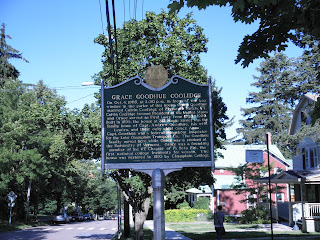At my elementary school, watching 1776 (1972) in 5th grade was the closest thing we got to watching a non-kid film. Although it was rated G, the characters still uttered some mild swear words, and each one garnered a moment of hushed glee. As a lover of both history and musicals, it's not surprising that I loved 1776 as a kid- so much so that I was a little afraid to watch it again in case it didn't hold up.
I watched it again over the weekend, and was pleased to conclude it held up very well indeed. I finally got to watch the bits with Jefferson's wife that our teachers always fast-forwarded through, and all those flashbacks to Abigail made a lot more sense. But was it actually accurate?
Historical Accuracy:
There are two major inaccuracies in the movie, but at least both add to the drama of the movie (which is more than I can say for Magnificent Doll). First of all, Martha Jefferson never came to Philadelphia, nor would she because of her delicate health. Secondly, Caesar Rodney, one of the delegates from Delaware, was not actually on his deathbed, although he was suffering from skin cancer. However, despite these inaccuracies along with a little simplification of people's characters, the movie is quite accurate.
Grade: B+
Period Detail:
Having been to Historical Philadelphia several times, I can vouch for the fact that the scenery looks correct. The costumes are also well done, along with the interior space of Independence Hall. All in all, somebody's hard work paid off, because the movie looks like it takes place in the right location during the right time.
Grade: A
Casting:
William Daniels (aka Mr. Feeny from Boy Meets World) is a real treat as John Adams. He manages to convey his brilliance and passion, while also showing how he could get in his own way. The rest of the cast plays their parts with panache, with the exception of the actor playing Thomas Jefferson, who was just a little too blandly handsome for my taste, but the role didn't give him all that much to do. I was going to say something about how the acting can be a little over the top, but then I realized I was talking about a movie musical about the signing of the Declaration of Independence, and that was kind of the whole point.
Grade: A-
Quality of the Film:
1776 is by no means a perfect film, but it is endearingly earnest in its attempts to uncover what American independence really meant. It is also honest about the less savory aspects of the process, including the devil's bargain made in regards to slavery. The songs aren't the catchiest and the dancing is amateur, but this is a movie with its heart in the right place that also manages to convey some pretty important themes about what it means to be an American.
Grade: A-






















.jpg)

























